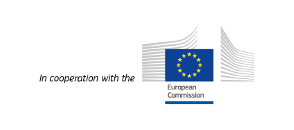Rationale for gender equality change in research and higher education institutions
Setting up and implementing a gender equality plan (GEP) requires strong arguments about the benefits of working towards gender equality in research and innovation (R & I). These supporting arguments are of different nature and outreach. They can be combined in different ways to build the case for gender equality within your organisation, and to reach different categories of stakeholders.
The European Commission expects the following benefits for the European research area (ERA) through its commitment to promote gender equality in R & I:
- increased success and innovation performance of organisations thanks to greater diversity;
- greater understanding of sex and gender specificities;
- improved work–life balance, equal access to opportunities and increased well-being.
In the following section, you will learn about these and other positive impacts of gender equality for R & I. In itself, quoting these broad areas of impact can help you build the case for setting up a GEP for your organisation. The scope of the arguments to be used should be adapted to the culture of your organisation. In particular, you should be cautious about the uptake and acceptance of performance-related arguments. While it is widely accepted that measuring performance matters in R & I, this framing is not accepted to the same extent in every context.
Consider broadening and strengthening your arguments for promoting gender equality by using arguments related to diversity and intersectionality. This will enable you to show that all employees, students and applicants will benefit from better (gender) equality.
As stated in UN sustainable development goal 5, ‘gender equality is not only a fundamental human right, but a necessary foundation for a peaceful, prosperous and sustainable world’. In this sense, the main types of benefits of gender equality in R & I are as follows.
In order to view videos and webinars or further tools and resources on the topics in this section, switch between the respective tabs. Otherwise, click below to continue to the next section: the step-by-step guide on GEP development and implementation. There you can decide whether you want to continue with the step-by-step guide for research organisations, universities and public bodies, or with a separate guide for research funding bodies.
- For a brief overview, watch the informative video produced by the EU-funded project ‘Gender equality in the European research area community to innovate policy implementation’ (GENDERACTION) on why we need gender equality actions.
- Listen to the message from Mariya Gabriel, European Commissioner, on International Women’s Day on why gender equality in R & I is important and how the EU aims to foster gender equality in Horizon Europe.
Benefits of gender equality and diversity in research and innovation
- The Norwegian Committee for Gender Balance and Diversity in Research provides six key reasons why gender equality is beneficial for research organisations on its website.
- The position paper Equality, Diversity and Inclusion at Universities: The power of a systemic approach published by the League of European Research Universities in 2019 describes how universities can become inclusive research environments and the benefits they might be able to reap from this change effort.
- In their article ‘Evaluating gender equality effects in research and innovation systems’, Bührer et al. (2020) summarise the multifaceted benefits of gender equality in R & I.
- The briefing note ‘Gender equality and research and innovation performance go hand in hand’ by the EU-funded project GENDERACTION describes why promoting gender equality is also good for innovation performance.
- In her Nature feature on diversity in research laboratories, called ‘These labs are remarkably diverse – here’s why they’re winning at science’, Powell (2018) explains why diversity and a culture of respect matter in R & I.
- The report Structural Change in Research Institutions – Enhancing excellence, gender equality and efficiency in research and innovation by the European Commission provides the main arguments for structural change and solutions for how to achieve this.
- A McKinsey & Company report from 2018, Delivering through Diversity, describes the business case for inclusion and diversity.
- An article by Pollitzer and Schraudner (2015) called ‘Integrating gender dynamics into innovation ecosystems’ explores how innovation systems can benefit from gender-sensitive approaches to knowledge production.
Effectiveness and efficiency of research
- An article by Bührer and Frietsch (2020) shows (based on the German women professorship programme and the pact for R & I) how investments in gender equality initiatives not only raise the number of women researchers, but also change publication patterns.
- Koning, Samila and Ferguson (2021) show in their article ‘Who do we invent for? Patents by women focus more on women’s health, but few women get to invent’ that, if R & I teams become more diverse, the innovations and research results become more inclusive.
- Similarly, Nielsen et al. (2017) provide empirical evidence that links the gender of authors to the integration of sex/gender analysis in research papers. In their article ‘One and a half million medical papers reveal a link between author gender and attention to gender and sex analysis’( ), they conclude that there is a robust positive correlation between women’s authorship and the likelihood of a study including gender and sex analysis.
- The article by Campbell et al. (2013) shows that publications of gender-diverse authorship teams achieve more citations than publications that have authorship teams composed of only one gender.
- Cheruvelil et al. (2014) provide lessons learnt for creating and maintaining high-performing collaborative research teams, emphasising the importance of diversity.
- An article by Smith-Doerr, Alegria and Sacco (2017) summarises evidence, arguments and strategies on how diversity matters in science and engineering teams.
